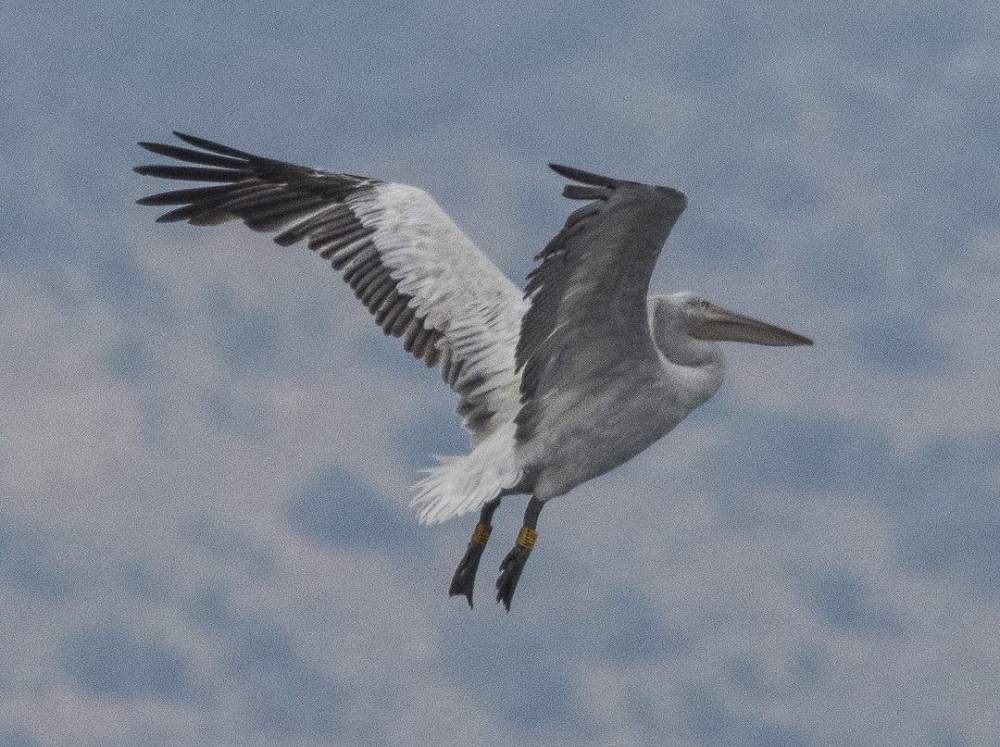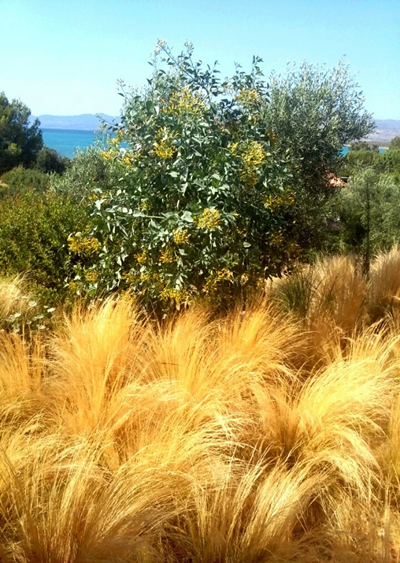
A very pleasant and interesting surprise was given to us by a Yellow-rimmed Pelican with yellow rings on its legs in Lesvos UNESCO World Geopark and especially in Kalloni Salt Lake. These rings are specially designed for large birds, and without disturbing or burdening the birds, it is possible to read them from a distance with the help of special optical equipment.
The ring numbers revealed that the bird had been ringed in Lake Kerkini (near Serres) in July 2020, while still a chick in its nest. It was fitted with a yellow plastic ring on each leg that bore a code (N137 and N136), along with 13 other chicks from other nests that year. The bird probably migrated, in autumn 2020 southwards, returned the following spring (2021) and did the same this year, only to return this time – documented – during its autumn migration from Lesvos. It has been here for several days already, along with 21 other Silver Pelicans and 2 Roseate Pelicans who are also stopping over in our important wetland.

Δακτυλιωμένος-Αργυροπελεκάνος_Στ_Ζαννέτος/Ringed-Silver Pelican St. Zannetos
In communication with Dr. Theodoros Naziridis, head of the Kerkini Lake Branch of the Central Macedonia Protected Areas Management Unit, we learned that in Kerkini the pelicans nest in artificial islands that had to be created as the water level of the lake fluctuates greatly. More than 200 pairs of Silver Pelicans have been nesting there in recent years and it is the second most important nesting area in our country after Lake Mikri Prespa. On our island, pelicans (both species with the most common being the Silver pelican) occur only during the migration season, mostly, the autumn one. We are also linked to Lake Kerkini (apart from the young pelican!) by our participation in the major birdwatching and conservation exhibition Birdfair last July in Rutland, England as both our areas are well known destinations for birdwatching throughout Europe.
The photo of the pelican in flight is by the Candidate Lecturer. Stelios Zannetou, PhD, who was in the group of observers who first spotted the ringed bird and read its number on a telephoto lens photograph. In the days that followed, its reading with a telescope was confirmed by the Kalloni Environmental Information Centre and the Greek Bird Ringing Centre (EKBY) was also informed of the find.







Leave A Comment